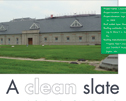Technological innovation in the roofing industry recently has focused on roof systems that incorporate environmental features such as cool roofing materials, photovoltaic collectors and surface vegetation. A less visible environmental aspect of roof systems involves the amount of waste generated by their construction and demolition. Asphalt shingle tear-off that ordinarily would be sent to landfills is now more frequently being recycled into hot-mix asphalt (HMA) for road construction.
HMA obstacles
Early efforts to use asphalt shingles in HMA focused exclusively on scraps or waste from the initial manufacturing process. Manufacturers' shingle waste is easy to combine with HMA because it contains valuable asphalt and aggregates, can be ground, is free of contaminants, and requires simple material delivery or pick-up.
However, using asphalt shingle tear-off in HMA raises some issues. Chief among these is contamination—asbestos, nails, plastic, wood and other debris diminish the material's integrity, and most state paving specifications have not allowed its use. However, research is under way to test the suitability of shingle tear-off in HMA applications and assess its economic value to state departments of transportation and private HMA users.
Use of asbestos to manufacture roofing shingles in the early 1960s through the early 1970s was rare, and, consequently, only a small percentage of shingle tear-off contains asbestos. Testing by recyclers of asphalt shingles ground for use in HMA shows the presence of asbestos to be negligible; however, some states restrict the inclusion of ground shingle tear-off in HMA because of the possible presence of asbestos.
Most recycling machinery easily handles removing nails and other metal contaminants that are part of recycled waste, but other debris poses problems for shingle tear-off use in HMA. Successful recyclers visually monitor the quality of shingle tear-off brought to their facilities and randomly sample materials in loads for asbestos content.
For roofing contractors, recyclers' requirement for uncontaminated shingle tear-off has made recycling a less attractive alternative than a landfill. Unless a recycler charges reduced tipping fees—amounts charged for dumping loads of debris—it makes little economic sense for a roofing contractor to separate contaminants from shingle tear-off.
Therefore, most recyclers accommodate roofing contractors' reluctance to segregate shingle material from other tear-off debris by accepting mixed debris that has been loaded in a trash container in separate layers at the job site. At a recycling facility, contaminants loaded at the top of a container can be removed easily.
Saving money
Estimates of the amount of asphalt roofing shingles deposited in U.S. landfills each year range from 6 million to 18 million tons. The yearly cost to roofing contractors for disposal of asphalt shingles in landfills is estimated to be more than $300 million.
As landfills reach capacity and close, costs to dump debris will increase and may make recycling shingle tear-off more cost-effective. If research supports the value of shingle tear-off in HMA, wider acceptance on the part of state departments of transportation for recycled shingle tear-off to be included in HMA should positively affect potential markets for it and boost economic incentives to recycle.
Opportunities
Recycling of residential tear-offs is being requested by more homeowners, which may provide a marketing opportunity for roofing contractors well-versed in the logistics of shingle recycling. Minimizing a roofing project's environmental effects by recycling shingle tear-off makes you a responsible steward of the planet; the fact that it also can positively affect your bottom line makes it a smart business decision.
Harry Dietz is NRCA's director of risk management.



